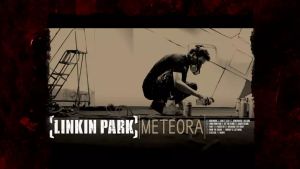JAKARTA - The tradition of martial arts is not a new thing in the archipelago. Each region has its own martial arts style. Self-defense is an important defense instrument in the Dutch colonial era, then Japan. Self-defense action in Betawi land, for example.
Betawi people call martial arts action playing punches. The flow was various from Beksi to Cingkrik. The appearance was due to the accumulation process of various cultures. Then, playing punches became an important lesson against the invaders.
Andil The Netherlands built Batavia (now: Jakarta) full of dynamics. The Dutch trading conspiracy, the VOC made Batavia the center of power since 1619. They built Batavia with European tastes. A magnificent and luxurious building was present.
Kompeni added with all kinds of facilities. All kinds of work were also present in Batavia. At its peak, Batavia became the most advanced area in the archipelago. The news of the wind blew. Whoever wants to change their fate, just come to Batavia.
People from various nations and countries come. People in other parts of the archipelago were also present. Some came as slaves. There are also migrant workers. There are also traders.
SEE ALSO:
This condition makes Batavia a pot that melts all cultures according to historical researcher from Australia, Lance Castle. Cultural acculturation ensued. The cultural trend can be seen from the birth of Batavia's unique martial arts, playing punches.
The martial arts elders then began to absorb a variety of combinations of the creations of the movements. As a result, various kinds of punches emerged. The popular flows include Beksi, Silat Sabeni, Cingrik, to Paseban.
The four streams have their own roots. Some come from the archipelago. There are also those who come from outside the archipelago such as defending from the luggage of Chinese immigrants who later settled in Batavia. The variety of flows became an important part in the history of resistance to Dutch colonialism, from the VOC went bankrupt and was replaced by the Dutch East Indies government.
The flow of the Betawi blow based on its roots is categorized as two, namely the roots of the Outer Stream (read: the flow from outside the archipelago) which is heavily influenced by the martial arts of Chinese immigrants and the Roots of the Inflow (read: the Nusantara sect).
It can be said that the flow of external martial arts as the main flow that affects the flow of local martial arts, to become a stand-alone flow of Betawi punches, regardless of whether the flow of martial arts brought by immigrants in their home country is the main flow or not. The flow of outer martial arts that mostly affects playing punches brought by Chinese immigrants from South China," said GJ Nawi in the book May Blow: Typical Pencak Silat Betawi(2016).
The presence of playing punches merged into part of the daily way of life of Betawi people in the colonial era. There are also two Betawi people who handle it. First, religious experts recite the Koran. Second, learning silat. Both must walk in rhythm.
The narrative is evidenced by the activities of the Betawi youth who in the afternoon recite the Koran, then at night it is continued with a practice of playing punches. Betawi cultural observer, Rohmat S agrees. The activities of studying and learning to play punches have been carried out from generation to generation.
The man who is familiarly called Bang Omat considers playing punches to get a large portion of Betawi's life is the same as learning religious knowledge. This means that playing punches is studied as part of defending fellow human beings who are Islamic.
The presence of playing punches also means that the life of the Betawi people cannot be underestimated. The leader of the Kong Noer Traditional Beksi Silat College revealed the closeness of the blow to religion that can be captured by the mind that is present through a machete stab.
The joke that is often used by the Betawi striker defending the truth has a philosophy. Betawi heroes seem to have their own code of ethics. The legal challenge is being good at playing punches showing off machetes. The narrative is because machetes are sacred weapons. Alias is not used for any use.
The Betawi heroes who saw the oppression of the Dutch to the natives found a reason. His joke was used to defend those who were oppressed from Dutch colonialism. That's why many struggles in the view of the Dutch as an uprising that gave rise to maen-hit figures with machetes as a test of resistance.
These figures included Entong Fat in 1916 to Kaiin Mr. Kayah in 1924. The champions also participated a lot in defending Indonesia's independence in the 1945-1949 Revolution War.
"Goglok is not just an ordinary sharp object, because if you look at it, there is also a beauty and a deep philosophy. How not in every anatomy of the machete there is a deep meaning.
"The machete handle symbolizes the grip of life. The Sharp Bill is interpreted as a symbol of courage, as well as a sarong that is interpreted as shrouded in religion and belief," said Rohmat as revealed to VOI, December 19, 2021.
The English, Chinese, Japanese, Arabic, and French versions are automatically generated by the AI. So there may still be inaccuracies in translating, please always see Indonesian as our main language. (system supported by DigitalSiber.id)














